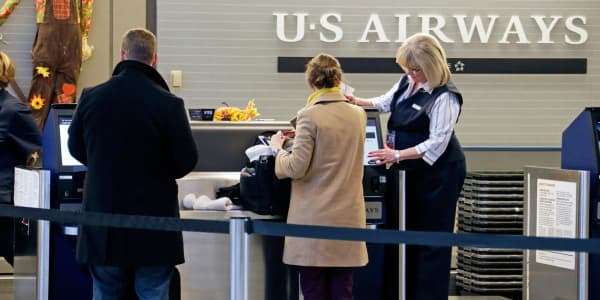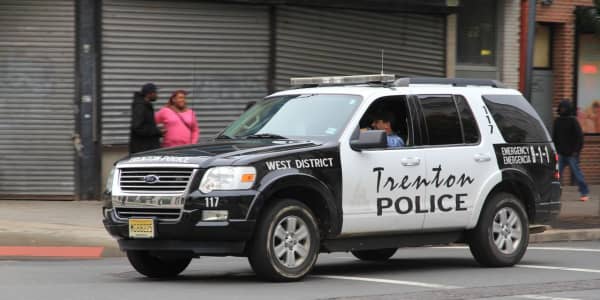There are two seemingly contradictory stories about cities and metropolitan areas in the United States right now. One says that cities are dangerously weakened by fiscal crises, brought on by unfunded pension obligations, plummeting property tax revenues and cuts in state aid. The other says that cities and metros are solving problems and driving economic growth while the federal government remains paralyzed.
Both stories are true.
The fiscal crisis is very real for some places, but it's not universal. Most cities are fiscally healthy, thanks to hard choices and smart budgeting. Bankruptcies like Detroit's are rare. While Chicago's pension gap has made headlines, there are also places like Charlotte, N.C., Milwaukee and San Antonio, where pension costs are well under control.
(Read more: Pandemic of pension woes is plaguing the nation)
More important, turning around the economies of cities and metros does not depend exclusively on the city government's balance sheet. Even with Detroit in bankruptcy, an abundance of investment is happening within the city boundaries. Quicken Loans founder Dan Gilbert has invested $1 billion in downtown properties through his company Rock Ventures. Philanthropies like the Kresge Foundation and the New Economy Initiative, along with the Department of Transportation and Small Business Administration, have provided critical grants and loans. Nonprofits like Midtown Detroit Inc. and the Detroit Economic Growth Corp. are brokering deals and connecting investors to opportunities. As a result, there has been a powerful revival in two neighborhoods: Midtown and Downtown. These areas could be the engine that drives the recovery in the rest of the city.
Why are even struggling cities like Detroit attracting investment? Because economic growth depends on human capital, innovation and infrastructure—assets disproportionately concentrated in cities and metros. Detroit's downtown and midtown, like the downtowns and midtowns of other large cities, are home to major educational institutions, start-ups, hospitals and a core of residents wanting proximity to jobs, entertainment options and other people. Recent research has shown that proximity and density also spur innovation, so dense places create a virtuous cycle of creativity, more density and more creativity.
(Read more: A snapshot of urban America)
Leaders in cities and metros are figuring out how to use public, private and philanthropic dollars in ways that will support this new economy.Bruce Katz and Jennifer BradleyVice president, fellow, Brookings Institution
Leaders in cities and metros are figuring out how to use public, private and philanthropic dollars in ways that will support this new economy. For example, after the financial sector collapse, New York City's leaders realized that new growth would depend on a strong institutional platform for innovation. The city invited universities from around the world to compete to build a new science and engineering graduate school and eventually chose three winners. The city offered public land and about $130 million total in infrastructure improvements. This investment has led to about $2 billion in economic impact so far. Over the next 30 years the three schools are expected to generate more than $33 billion in economic impact, more than 48,000 jobs and nearly 1,000 new companies.
In northeast Ohio, philanthropies based in greater Cleveland, Akron, Youngstown and Canton have pooled their money into the Fund for Our Economic Future, which is helping small- and medium-sized manufacturing firms retool their facilities and retrain their workers to be more innovative and competitive. The fund has capitalized new nimble intermediaries to connect entrepreneurs and manufacturers, suppliers and customers, and workers and jobs. As a result, the region is home to new or stronger companies in biomedicine, flexible electronics, water technologies and new energy. Thanks to the collective work of these philanthropies and their partners, the region has gained 10,500 jobs, $333 million in payroll and $1.9 billion in investments.
Urban fiscal challenges are real, but they are not the only important fact about cities. Cities and metro areas are grappling with a huge jobs deficit and a spike in poverty and near poverty: Between 2000 and 2011 the number of poor and near poor in the United States increased from 81 million to 107 million.
City and metro leaders have to reinvent affordable housing and rapidly boost the STEM skills of their residents. Mayors and leaders from the public, private, philanthropic, university and civic sectors may be even more motivated to jump-start their economies because they know that fatter tax rolls and revenues will make their fiscal and social problems less daunting. Fortunately, they have the assets and networks to get the job done.
—By Bruce Katz and Jennifer Bradley, Special to CNBC. Katz is vice president at the Brookings Institution and co-founder of the Metropolitan Policy Program. Bradley is a fellow and senior advisor at the Brookings Institution. They are the co-authors of The Metropolitan Revolution: How Cities and Metros Are Fixing Our Broken Politics and Fragile Economy.




